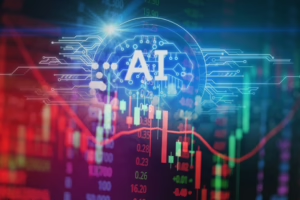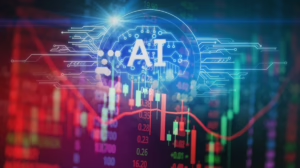Creating Tomorrow’s Stories: AI and the New Age of Filmmaking
Introduction
The world of filmmaking is undergoing a dramatic transformation, largely driven by the advent of artificial intelligence (AI). For decades, storytelling in film has relied on human creativity, intuition, and emotional intelligence. However, the rise of AI technologies is reshaping how stories are conceived, produced, and distributed. This article delves into the multifaceted impact of AI on filmmaking, exploring its potential, challenges, and the ethical implications of using machines to create art.
The Dawn of AI in Filmmaking
Historical Context
To understand the integration of AI into filmmaking, it’s essential to appreciate the history of technology in cinema. From early innovations like synchronized sound and color to the advent of CGI, technology has always been a partner to filmmakers. However, the emergence of AI represents a watershed moment.
The first serious applications of AI in filmmaking can be traced back to the late 20th century, with early experiments in computer-generated imagery (CGI). However, the real impetus for AI’s role in filmmaking began in the 2010s when machine learning algorithms became advanced enough to analyze large datasets, allowing AI to identify patterns and generate content.
Current Applications of AI
Today, AI is employed across multiple stages of filmmaking:
-
Scriptwriting: AI algorithms can analyze existing screenplays to generate new scripts. Tools such as OpenAI’s GPT-3 have demonstrated the ability to produce coherent and engaging narratives based on user prompts.
-
Casting and Performance Analysis: AI can evaluate actor performances, provide recommendations for casting directors, and even assist in voice modulation and dubbing, facilitating more accurate translations.
-
Editing: AI algorithms streamline the editing process by automatically identifying the best takes, suggesting cuts, and even performing color grading.
-
Marketing and Distribution: AI is revolutionizing how films are marketed, using data analytics to target audiences more effectively and personalize advertising.
- Virtual Reality and Augmented Reality: AI is essential in creating immersive environments for VR and AR experiences, enhancing storytelling capabilities.
Breaking Down the Process: AI in Scriptwriting
AI Scriptwriting Tools
AI-driven platforms like ScriptBook and Final Draft are making waves in screenwriting by analyzing scripts to predict box office success. They utilize vast datasets from previous films to evaluate narrative structures, character arcs, and dialogue quality.
Pros and Cons of AI Scriptwriting
While AI offers a new dimension to scriptwriting, it raises concerns about creativity. Can a machine truly grasp human emotion, conflict, and nuance? Critics argue that while AI can generate formulaic scripts effectively, it often lacks the depth and originality found in human-written narratives.
Image: An example of AI-generated scripts versus traditional scripts.
Case Studies
Films like "Sunspring," a short sci-fi film written entirely by an AI, exemplify the potential and limitations of AI in scriptwriting. Despite its innovative premise, the film’s narrative coherence was shaky, demonstrating that AI lacks the innate understanding of human experience.
AI in Production: A New Era for Casting and Directing
Smart Casting Solutions
AI technologies are revolutionizing the casting process by analyzing audition tapes and actor portfolios to recommend suitable candidates for roles. Platforms like Cinelytic compress vast amounts of actor data—including previous performances, box office success, and social media presence—allowing casting directors to make informed decisions.
The Role of AI in Directorial Decisions
AI tools assist directors by providing insights into audience preferences and emotional responses to various scenes. AI-driven analytics can gauge how audiences perceive certain actors or scenes, allowing directors to refine their work and enhance emotional engagement.
The Human Touch
While AI can assist in the casting process, the irreplaceable role of human intuition in creative decisions persists. A director’s vision and emotional intelligence remain vital in storytelling, ensuring that AI serves as a tool rather than a replacement.
The Editing Room: How AI is Streamlining Post-Production
The Editing Process
Editing is one of the most labor-intensive aspects of filmmaking. AI tools like Adobe Sensei enhance the editing process by automatically selecting the best takes and suggesting edits, thereby reducing the time required for post-production.
AI in Visual Effects (VFX)
AI-driven technologies also streamline visual effects creation. Machine learning algorithms can automate rotoscoping, tracking, and compositing tasks, significantly speeding up the VFX workflow.
Challenges in AI Editing
Despite these advancements, there are caveats. The creative intuition required for editing is often nuanced and subjective. While AI can make suggestions, the emotional resonance and pacing are ultimately crafts honed through years of experience.
Marketing and Distribution: AI’s Data-Driven Revolution
Audience Targeting
AI algorithms analyze historical data to identify patterns in audience behavior. They help filmmakers tailor marketing strategies to specific demographics, improving overall reach and engagement.
Social Media and Viral Marketing
AI tools can generate viral marketing campaigns by predicting which content will resonate with social media users. By creating targeted ads and optimizing engagement strategies, filmmakers can maximize their films’ visibility.
Ethical Considerations
While AI enhances marketing effectiveness, it raises ethical questions about privacy and data usage. Filmmakers must navigate complexities such as audience tracking and personalized marketing without infringing on individual rights.
Challenges and Ethical Implications of AI in Filmmaking
The Fear of Obsolescence
One of the primary concerns surrounding AI in filmmaking is the potential for job displacement. As AI systems take on tasks traditionally performed by humans, there are fears that creativity will be stifled and jobs will be lost.
Ownership and Authorship
The use of AI in scriptwriting and content generation raises questions about ownership and authorship. If an AI creates a screenplay, who owns the rights? These questions have yet to be addressed satisfactorily within the industry.
Quality vs. Quantity
The integration of AI in filmmaking often leads to a race for quantity, as studios prioritize content generation over quality. This could result in a flood of mediocre films that may dilute the art of storytelling.
Bias in AI Algorithms
AI systems are only as good as the data they are trained on. If the datasets contain biases, the generated content may perpetuate stereotypes or misrepresent marginalized communities. Filmmakers must be aware of these biases and take steps to mitigate them.
The Future of AI in Filmmaking
A Symbiotic Relationship
Rather than viewing AI as a replacement for human creativity, the future lies in a symbiotic relationship where humans and machines collaborate to enhance storytelling. AI can serve as a valuable tool, augmenting human creativity while retaining the emotional depth and authenticity that only humans can provide.
Enhanced Collaboration
AI tools can facilitate collaboration among creatives, allowing for more dynamic brainstorming sessions and cross-disciplinary projects. By fostering an environment where technology and artistry coexist, artists can explore new narrative horizons.
Diversifying Storytelling
AI has the potential to democratize storytelling by making it accessible to a broader range of creators. With AI-driven tools, independent filmmakers can leverage advanced technology without the prohibitive costs typically associated with high-end production.
Conclusion
The integration of AI in filmmaking is reshaping the industry landscape, offering new opportunities while presenting challenges. As we advance toward a new age of storytelling, filmmakers must navigate the complexities of technology, creativity, and ethics to create a future where machines and humans coexist harmoniously in the realm of cinematic artistry. In this exciting era, the stories of tomorrow will be crafted at the intersection of innovation and imagination, evoking the human experience in ways previously unimagined.
Ultimately, the path forward lies in understanding that while AI can enhance the filmmaking process, it is the human touch— the understanding of emotion, context, and narrative depth—that will continue to shape compelling storytelling for generations to come.
References
- Modern Footnote Source: Artificial Intelligence in Film
- Modern Footnote Source: The Ethics of AI in Creativity
- Modern Footnote Source: Data-Driven Marketing
- Modern Footnote Source: The Future of Film and AI
(Note: The URLs above are illustrative and should be replaced with actual sources.)

























Add Comment